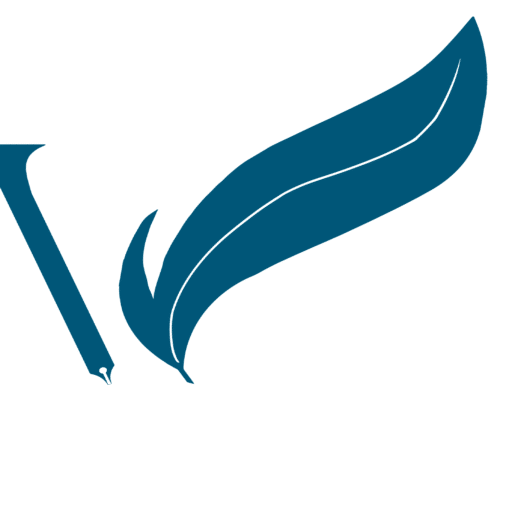Your cart is currently empty!
The Importance of Filling Plot Holes

in
Disclaimer: This post may contain affiliate links for books we recommend. If you make a purchase through these links, at no additional cost to you, we may earn a small commission. See our full Terms of Use here.
In any story, it’s important to tie up any loose ends that might have been left hanging. As writers, we call these plot holes because they are holes in the story that need to be filled in by the writer. When your readers think something makes little sense, you risk losing them, so it’s important to fill those plot holes with answers or explanations before someone else does it for you. Luckily, these tips can help you out with everything from basic dialogue to character actions and settings.
A Hole Issue
A plot hole is a gap or inconsistency in a storyline that goes against logic or narrative sense. Typically, it refers to missing information, events, actions, character traits, and motivations that are required to understand what has happened within a fictional story. It can also refer to conflicts within an otherwise solid plotline when aspects do not fit together as they should. In short, a plot hole is any piece of information that disrupts continuity.
A story with plot holes comes across as confusing and often seems to contradict itself. Because most people will give up on watching or reading something they find confusing, it’s important to catch these plot holes before you publish your book. Knowing how to find them is just as critical as knowing how to fix them. It’s surprising how many writers, who are meticulous about their characters, settings and descriptions, don’t pay attention to what happens in their stories once they write dialogue or plotting out action scenes.
A Bad Ride
It’s like driving down a road with constant potholes in the pavement; eventually you’ll either fall into one or your car will break down because it can’t handle the wear and tear. A plot hole could cause huge issues with continuity and can break a reader’s sense of immersion in your story if not addressed quickly. If you’ve spotted any plot holes, address them right away before they affect your readers’ perception of your work. If you don’t want to fix them yourself, consider having another person proofread for errors and holes in your narrative structure.
You may also hire someone who specializes in copy editing or developmental editing. Publishing companies often provided these services, but there are many freelance editors available online who can help you out for much less money than a traditional publisher would charge. You might even know someone who has an eye for detail—and doesn’t mind reading through your entire manuscript—who would help on spec (for free).
Of course, hiring an editor isn’t necessary if you’re self-publishing, but it is highly recommended. After all, no matter how hard you try to make your book perfect, there will always be mistakes that slip past everyone’s notice. Even big publishers have their fair share of embarrassing typos! Don’t let these mistakes turn off potential readers before they ever have time to enjoy your writing. Fixing plot holes is important if you want people to keep reading and enjoying your book(s) long after publication day.
Something’s Not Right
Loose ends need to be tied, plot holes need to be filled. Often, a character will say or do something with no previous explanation.
-A heroic passerby will know the exact location of the weapon secreted away pages earlier.
-A worried friend will simply fail to call and check on the person they show concern for.
-The antagonist prepares a trap in a specific location that is never revisited.
-An object goes missing from a scene, but the characters don’t seem to notice.
There’s a chance that your readers are feeling similarly frustrated when these plot holes arise—they want answers, too! It’s important to remember that not every piece of information needs to be specified. However, if you create a gap in your story, it is your responsibility as an author to fill it.
Get Your Shovel
Your plot has holes in it, don’t you have to fix them? Sometimes plot holes are noticed right away and other times they don’t pop until several drafts down the road. The good news is that they can be fixed. The easiest way to fill plot holes is by either editing your work or explaining more clearly how things happen. However, sometimes fixing plot holes requires a little extra effort and can get confusing really quickly. In cases like these, writers have several options at their disposal.
Try writing all of your current plot points in chronological order. Once you’ve done that, look at them critically. Ask yourself how each event leads into another one. Look for situations where characters’ actions make no sense within their personalities or backstories. And finally, ask yourself whether everything makes logical sense. You want to see if everything fits together smoothly. If it doesn’t, then you have a plot hole on your hands.
Ask yourself what caused your plot hole? Then write three solutions for fixing that problem. If you discover a new plot hole later on, take note so you can add it to your list of story issues to address. Keep track of any workable solutions while they’re fresh in your mind because they’ll come in handy later on when it comes time to fill those holes!
Tie Off Those Ends
As you go through revision, make sure that each solution leads to a satisfying conclusion. If not, throw it out and try another option. Don’t be afraid to change your plot as much as needed until it’s seamless and complete. It’s a good idea to have a few backup plans in case you can’t think of anything. Even if you do, it’s nice to know that you have other options if your first idea doesn’t work out.
If there are multiple problems with your story and/or multiple holes, then start by fixing what seems like it will be easiest first. Make sure that whatever solution you choose addresses every issue before moving onto other ones! If not, then go back and try again until everything is resolved.
If your plot holes are difficult to fix, ask for help from an editor or trusted friend. Sometimes, just having someone else look at your work can make all the difference. A fresh set of eyes can often point out issues that would otherwise be overlooked. The important thing is not getting frustrated and never giving up! Remember: no matter how big or small they may seem, plot holes are just another part of writing that needs to be addressed.
How Did This Happen?
1.) Poor planning–It may seem obvious, but plotting out your novel before writing it will help keep all those loose ends tied together from beginning to end. It also gives you something tangible (the plan) by which to monitor your progress as you go along writing, so nothing gets left behind. Think about how much easier things would be if writing were just like following directions!
2.) Losing focus–Another common reason for plot holes is that we get too focused on one aspect of our story, leaving other areas in shambles. Perhaps we spend all our time developing one character arc instead of another or begin building an entire subplot before cutting it off because we think it has no relevance later on. Focus is essential when drafting and revising but know when enough is enough so that you can fully develop each important thread sacrificing no others in its place.
3.) Being unclear about what’s happening–There are two kinds of writers: those who outline and those who don’t. We see both methods have their pros and cons, yet those who outline often say they never have a problem with plot holes.
Either you haven’t put enough detail into your story, or you don’t know what information to reveal next. If you do not know how to fix these plot holes, try being more organized during the initial drafting process and outlining everything before moving onto chapter two. Also consider working with an editor, who can help point out where your book may lack details and offer suggestions on how to fill it all in properly.
Watch the Road
Keep notes on where you’re going: Even though plotting involves planning, things change during development. Jot down ideas as they come up, so you have reference points later on when questions arise, and you need clarification. Don’t be afraid to change things while remembering where they came from originally—this way, your idea isn’t lost but stays true to its original intent. Be flexible and remember that we set no idea in stone until it’s written into a story!
Going back over past writing sessions can also help jog your memory if you start to feel you’re missing something. A writer is nothing without their notes, after all. But what happens if you’ve never taken any? Make sure to keep an organized folder for your work, with folders for each story or novel you’re working on inside. You’ll find these particularly helpful when developing characters or world-building details. This system may seem intimidating at first, but once you get used to using it, you’ll realize how helpful it really is for organizing your thoughts and keeping track of important plot points.
-R.E.

